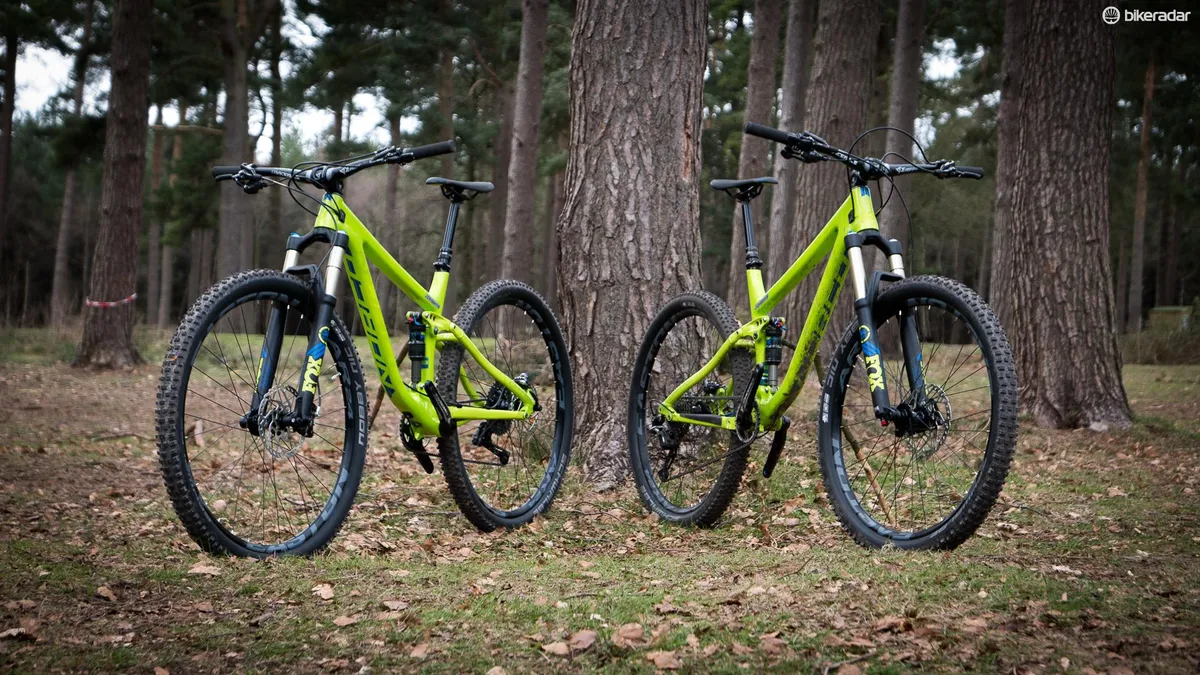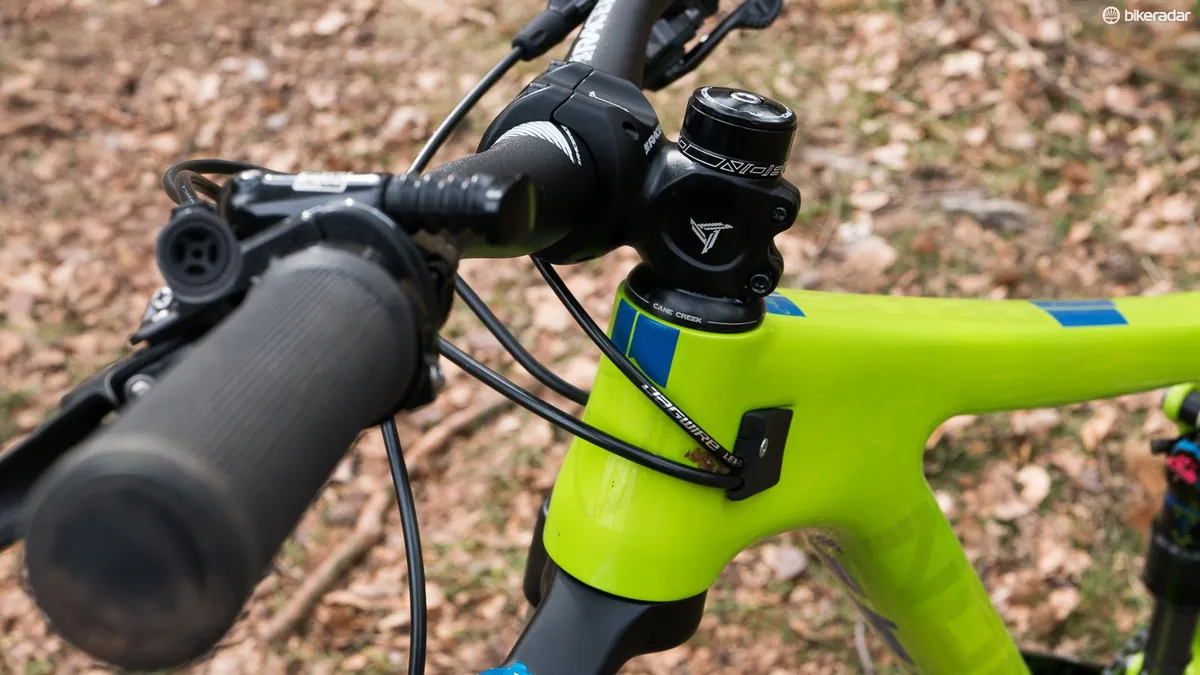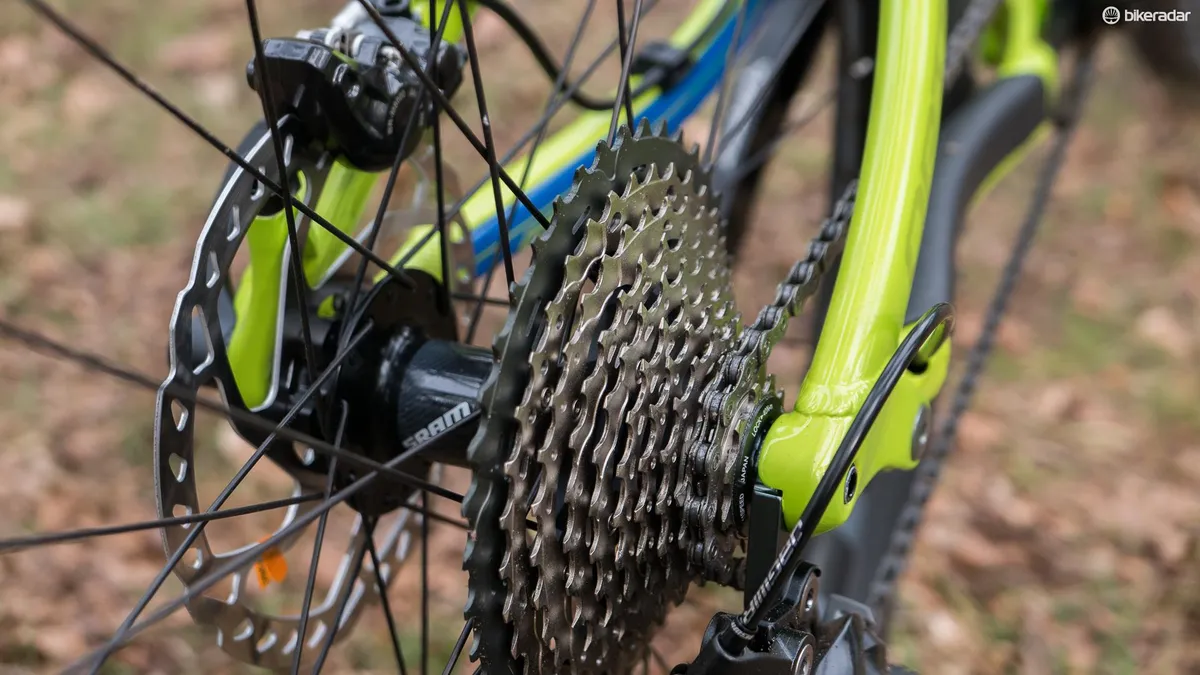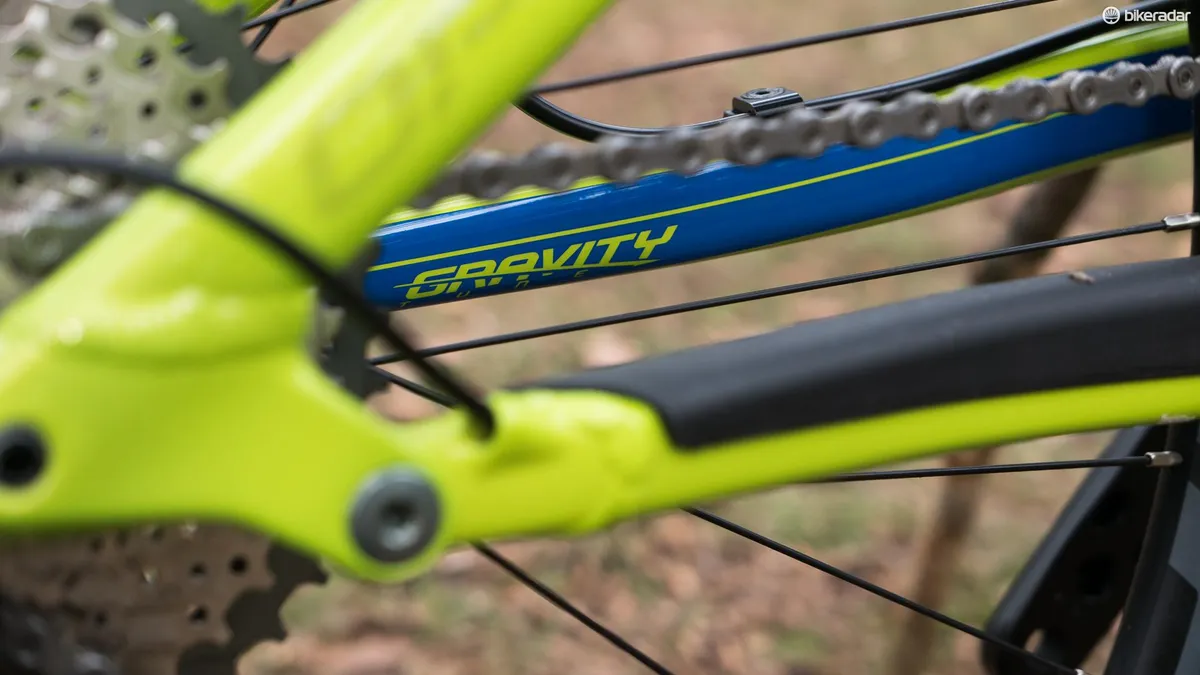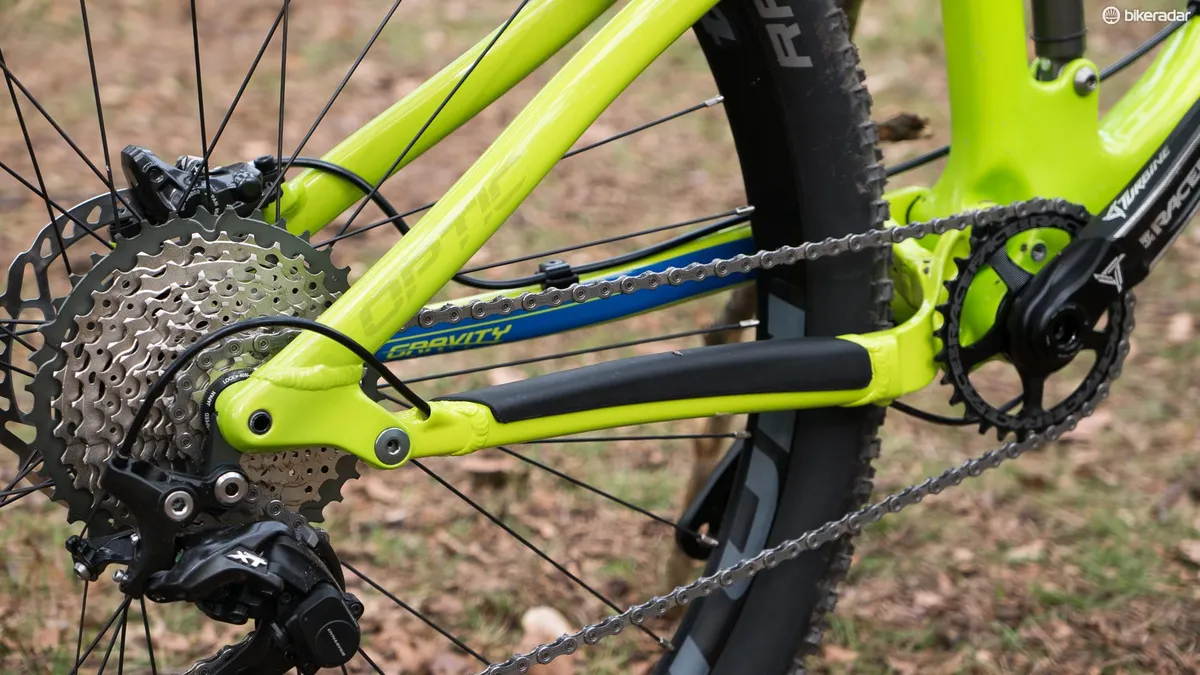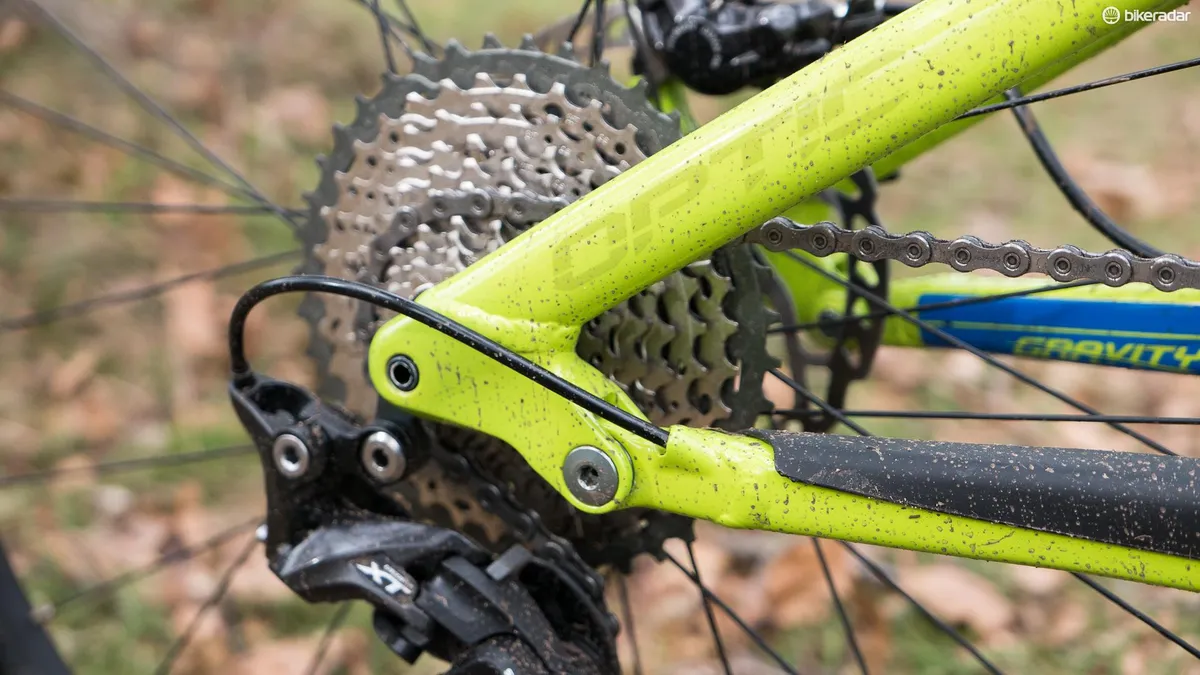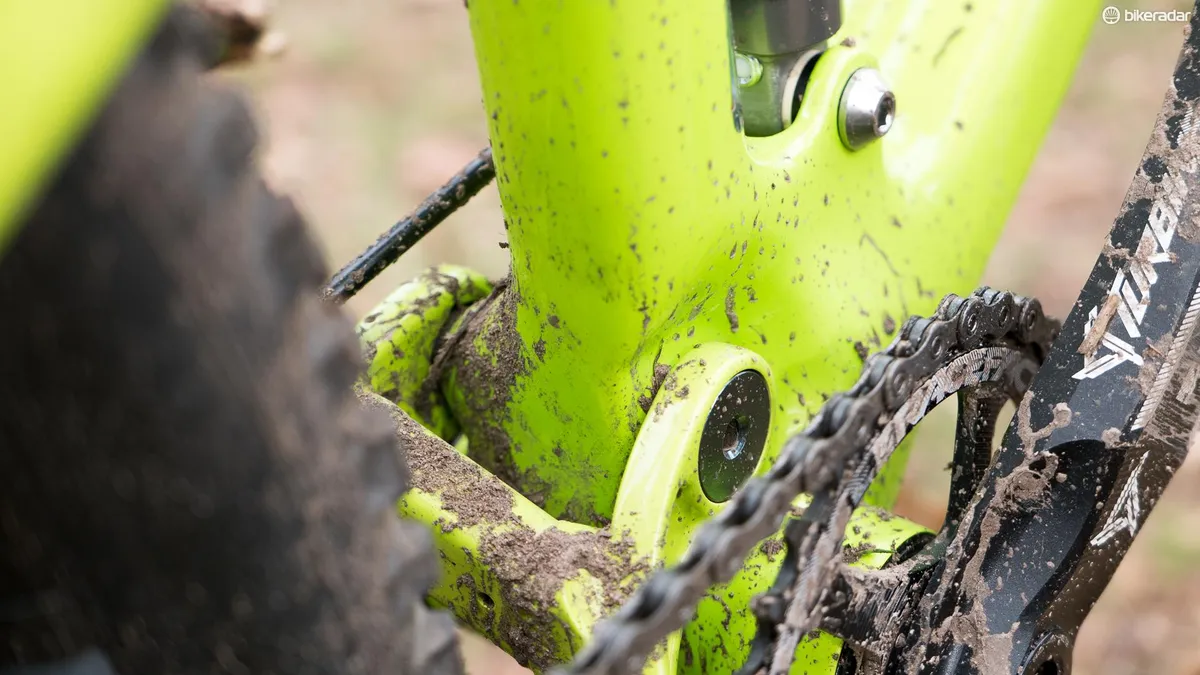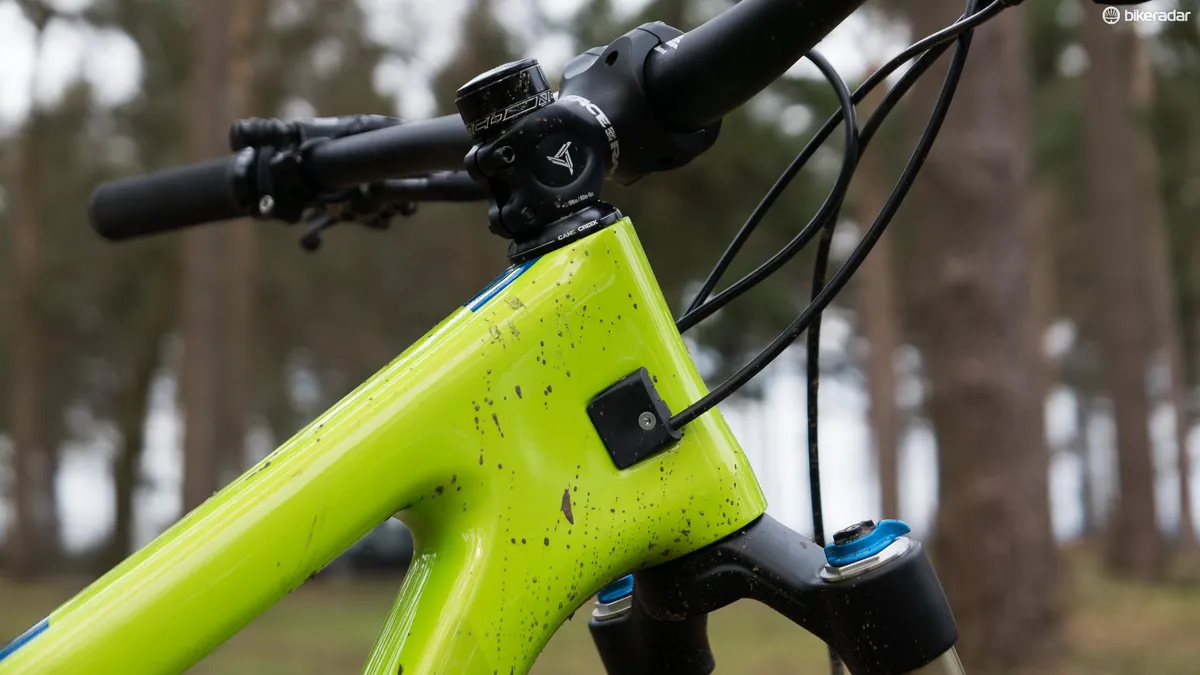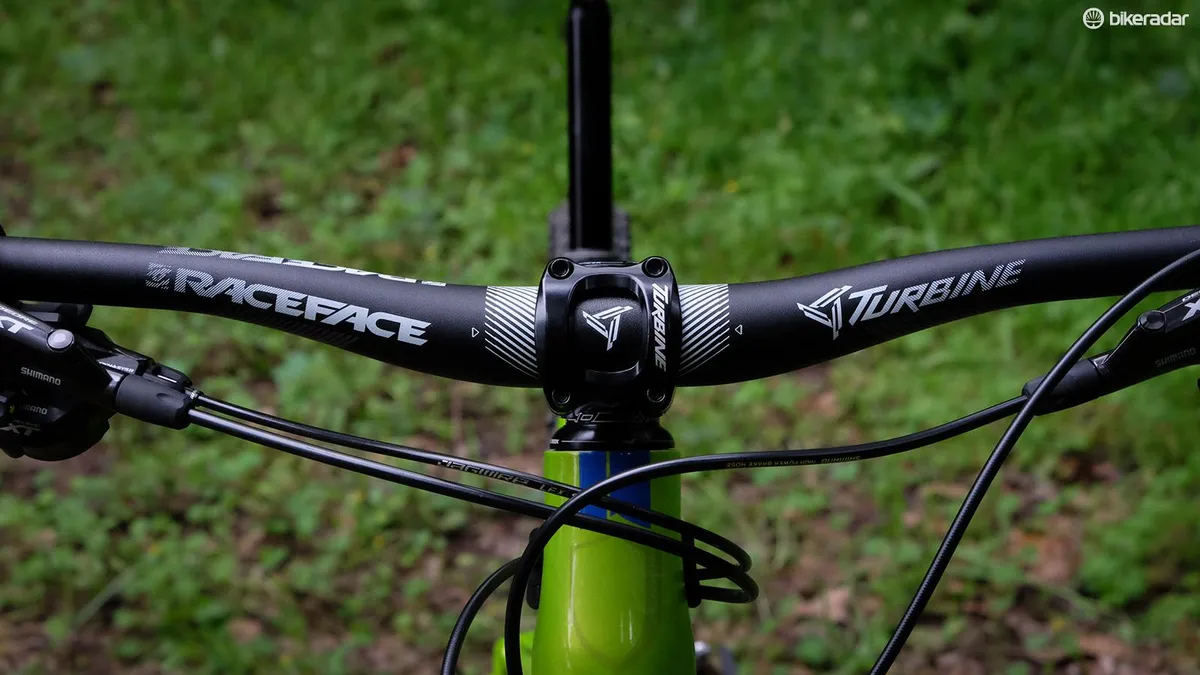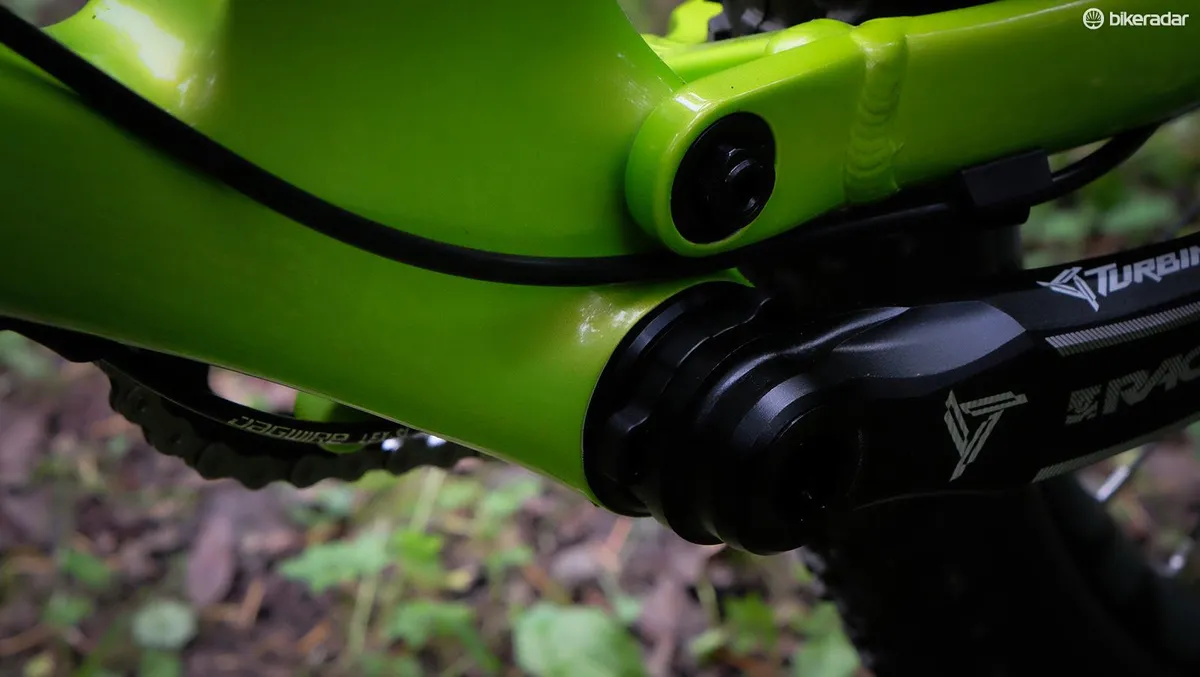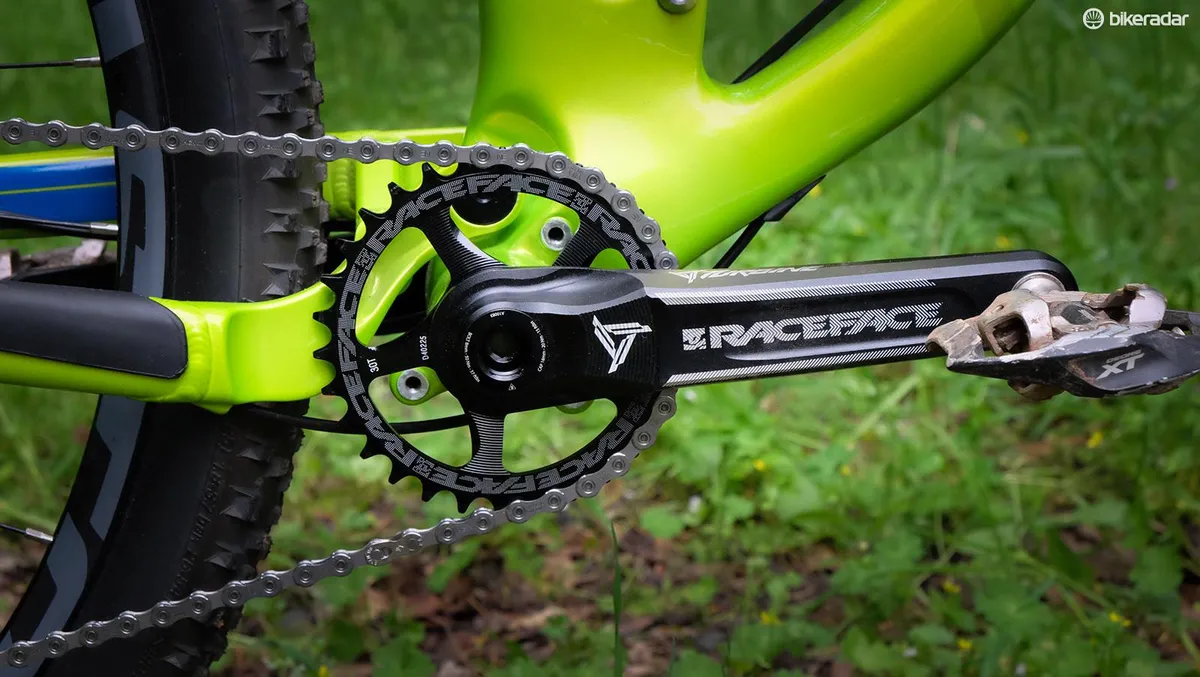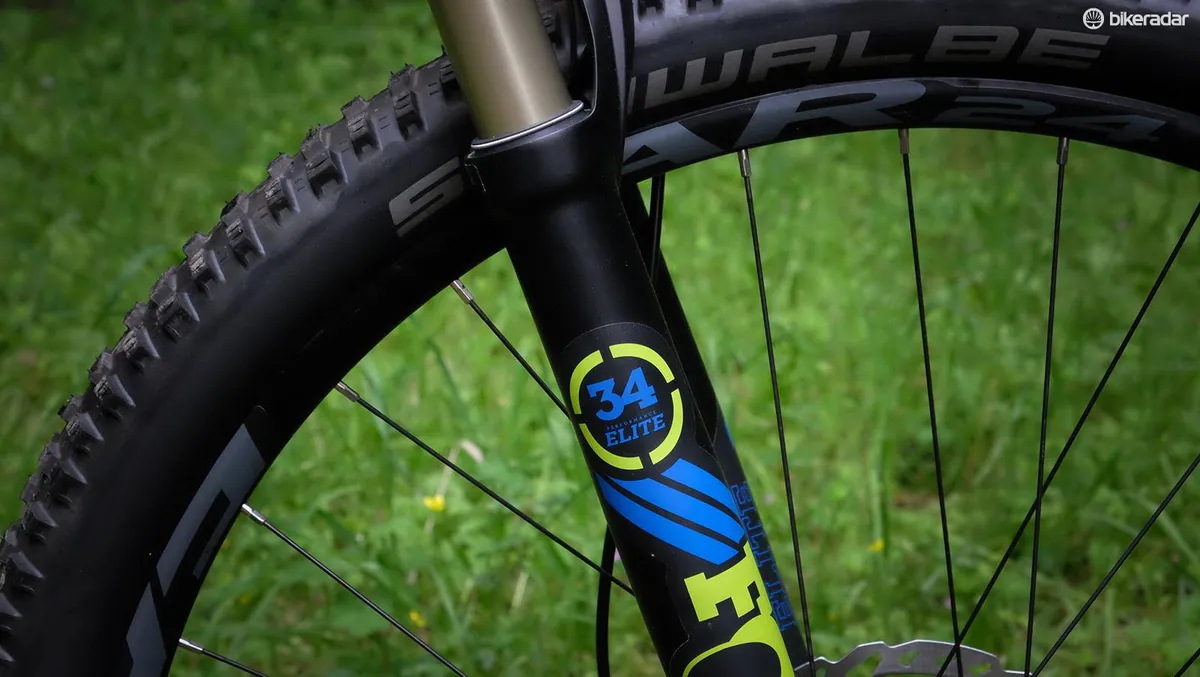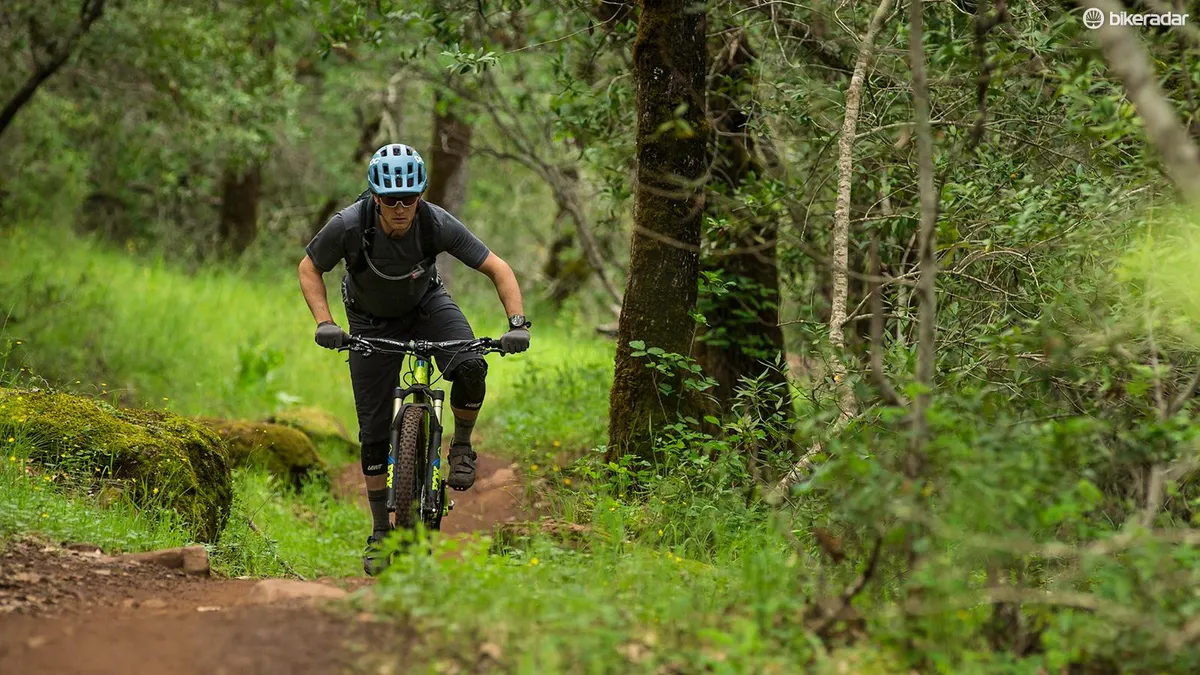Norco has a broad selection of successful full suspension mountain bikes in its arsenal: the Revolver is a potent cross-country race weapon, the Sight is a good choice for aggressive trail riding, the Range will see you through the ups and downs of enduro racing, and the Aurum is a downhill demon. While Norco’s line-up hits many of the target markets, the company has lacked a critical player: the short-travel trail bike.
The all-new Optic is going to be a nightmare for the terminally-indecisive mountain biker coming, as it does, in your pick of 27.5in or 29er wheels. Add in carbon or alloy-framed variants and you’re spoiled for choice.
Norco is very keen to stress that the Optic may have two different wheel size options, but that it’s very much designed to be one bike. The project originally started as a geometry experiment, but it led Norco to believe that it could create machines that brought out the best attributes in both wheel sizes while retaining a common handling feel. According to Norco, which one you choose should come down to how you feel about the intrinsic properties of each wheel size.
Same, same, but different
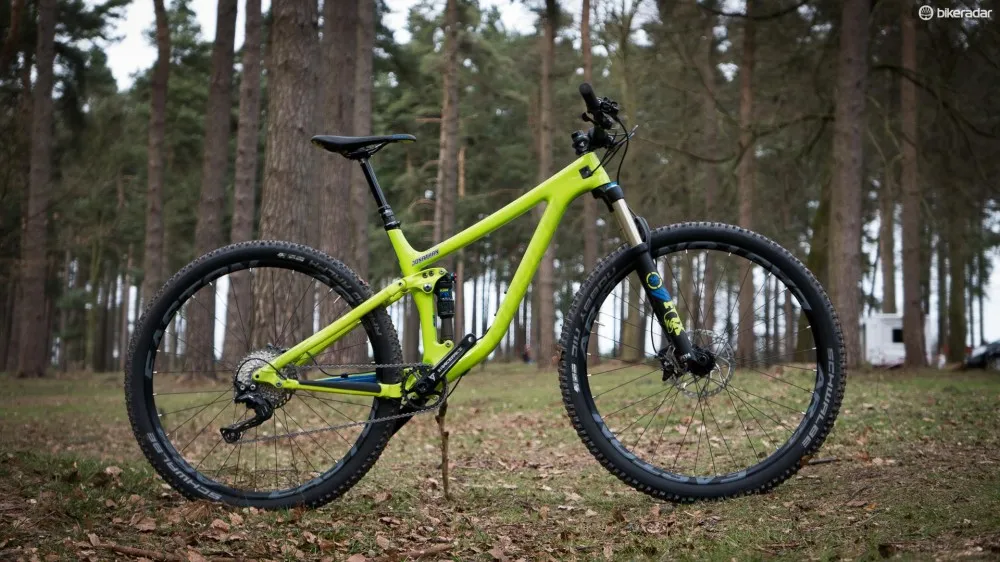
Norco's engineers managed to create this familiarity by matching key geometry numbers as well as suspension feel across the bikes. While the big-wheeler has a 120mm of fork travel and 110mm from the four-bar rear, the 27.5 bike has a 130/120mm split, with Norco saying that having a little less travel is masked by the roll-over ability of the bigger hoops.

29er versions come with 50mm stems, while the 27.5 models use 60mm stems
When it comes to the sizing, the reach and stack figures are actually identical between the bikes when you account for stem length and rise. Norco is calling these figures ‘Reach Plus’ and ‘Stack Plus’. Chainstay length is also consistent between the bikes, though in common with Norco's ‘Gravity Tune’ concept, the larger frame sizes get longer chainstays to balance out the longer front centre and to keep the rider centred, no matter how tall or short they might be.
There are plenty of sizes, too, with the 27.5 bike stretching from XS to XL, though the 29er range only goes from S-XL as Norco wasn’t happy with the handlebar height riders would be stuck with on an XS big wheeler. The 29er comes fitted with a 50mm stem while the 27.5 bike uses slightly longer 60mm stem. All bikes in the range use 760mm wide bars.
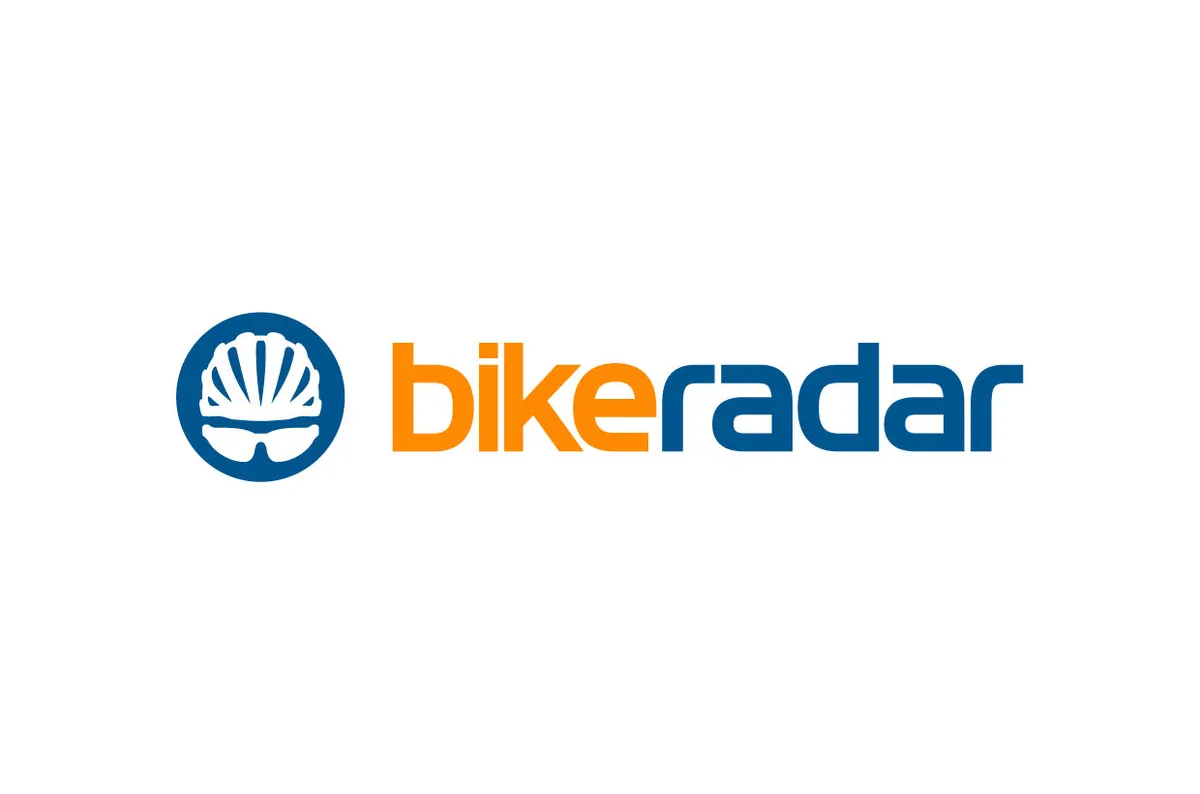
Norco's Gravity Tune pairs different chainstay lengths with different size frames to keep the riders positioning relatively consistent across frame sizes
Elsewhere there are some neat frame details. The carbon-framed bikes get tubing that’s scaled in diameter for each size, so that the bigger frames are stiffer in order to deal with heavier riders. The alloy-framed bikes don’t get this for cost reasons, though the two smallest sizes do get different down tubes.
You also get a very neat internal cable routing clamp at the head tube called the Gizmo that allows you to pull the cables taut and lock them there to prevent rattles. You can run almost any combinations of cables and hoses for remotes or even blank the holes off if you so wish.
All the bikes have a Boost 148 rear end to increase stiffness too, though only the 29ers get a corresponding Boost fork and front wheel. Going to a Boost rear end has also allowed Norco to give twin chainring compatibility on all the bikes, despite reasonably tight rear ends. The side-swing only front derailleur can be mounted to the frame via an adaptor that fits on the ISCG mounts and can be removed for clean looks too. It’s worth mentioning that the suspension is optimised around a 30-32t ring however. All the dual-ring bikes come with the bits needed to convert to 1x.

Something for everyone
Thanks to the choice of alloy or carbon, the Optic range covers a pretty broad spread of prices. For the top spec, carbon framed bike you’ll be looking at £4,899 / $7,199, which comes with Fox Factory suspension and SRAM X1/XX1 drivetrain, whether in the C7.1 27.5in version or C9.1 29er. Interestingly, Norco got Fox to do a special Trail Tune on the Fox 34 fork fitted to the big wheeler, as the base tune for the shorter travel 29er fork is much stiffer as standard and this just didn’t give the desired ride feel compared with the 27.5in fork.
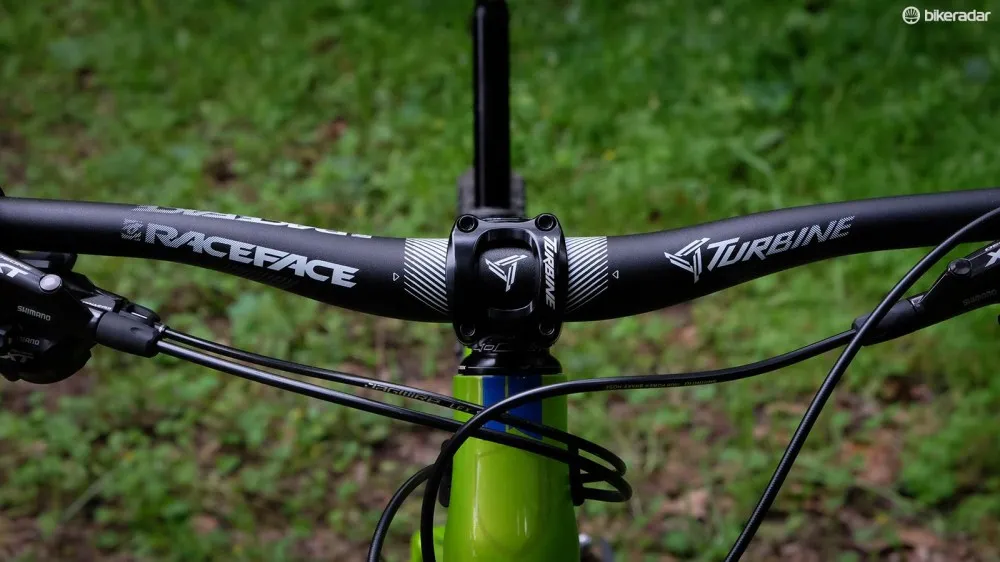
All versions of the Optic come with 760mm-wide handlebars
The C9.2 and C7.2 bikes keep the carbon frame but have slightly more affordable levels of Fox suspension paired to an 11spd Shimano XT drivetrain for £3,299 / $4,699.
The base carbon-framed bike is the C7.3/9.3, using a RockShox Revelation instead of the Fox 34 fork, though the Fox shock still gets the extra-plush EVOL can. SRAM provides the drivetrain in the form of an 11spd GX group.
The geometrically-identical alloy frame has a claimed 350g weight penalty over the 2200g (size medium) carbon frame, but with the entry level A7.2/9.2 machine costing £1,799 / $2,599 you’ll also have a lot of spare change weighing you down over the composite bike. The main downgrade is the RockShox Sektor fork, but the 11spd SRAM GX drivetrain is a welcome sight.
If you want something a little fancier without moving to carbon, then the A7.1/9.1 rounds out the range with the same alloy frame paired to a Fox 34 Performance fork, GX drivetrain and a KS dropper post for £2,099 / $3,099.
Two wheelsizes, four bikes, two testers = one opinion
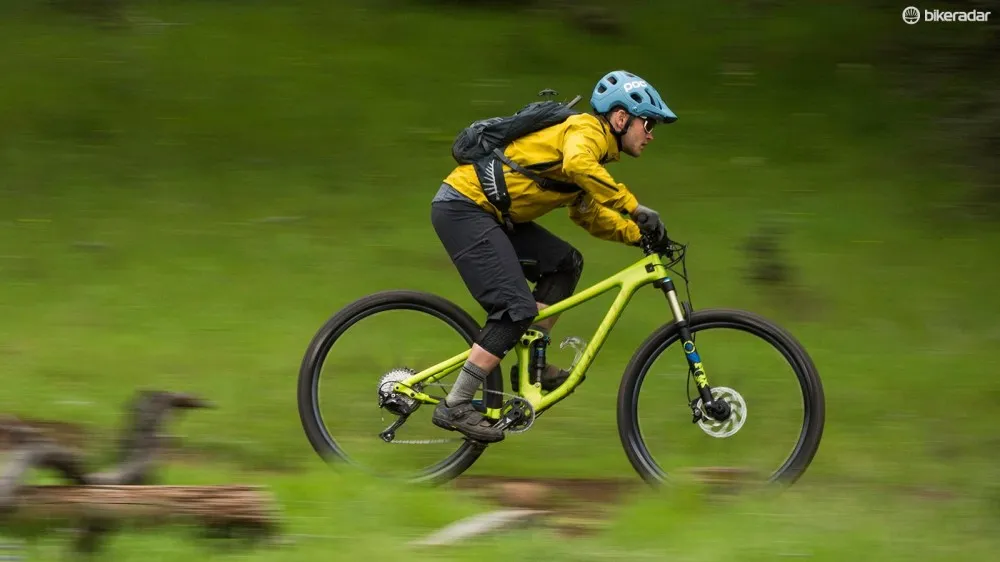
The big wheels and dialed geometry of the Optic C9.2 impressed both our testers
In keeping with this two-bike test, two testers put the second-tier Optic C9.2 and C7.2 through the paces. Jon tested these two bikes in the UK while I attended a launch in the US. Despite distance, different terrain and divergent riding styles, we came away with very similar impressions of Norco’s new trail bikes.
Norco studied several of the latest generation short-travel trail bikes before settling on numbers the company felt worked best. Neither of us had any gripes with their geometry or handling characteristics. In fact, both bikes handle so similarly that properties innate to each wheelsize really were quite apparent.
The Optic’s geometry is fairly aggressive for a relatively short-travel machine. The 27.5in Optics have 68-degree head angles, while the 29er versions are steeper by half a degree. The Gravity-Tuned chainstay length varies from 420mm on the smallest size to 440mm on the largest. The 29ers rear end is just a hair longer, starting at 425mm and ending up at 440mm on the largest Optic.
Norco reckons most riders are on bikes that have more travel than they really need — and therefore more weight. Sitting in between the cross-country racing Revolver and the all-mountain Sight, the Optic is designed to cover a huge swath of riding styles — everything from epic marathon rides to normal trail riding.
The company has tuned the rear end to have slightly less anti-squat built into the design than its longer travel machines. The reasoning for this is that while the Sight and Range are likely to be pedaled up relatively smooth trails before being unleashed downhill, the Optic is likely to spend a good amount of its time climbing rockier and rootier trails, so the suspension needs to remain more active while pedalling. The design is highly progressive though; don’t expect a soggy feeling machine that likes nothing more than blowing through the travel.
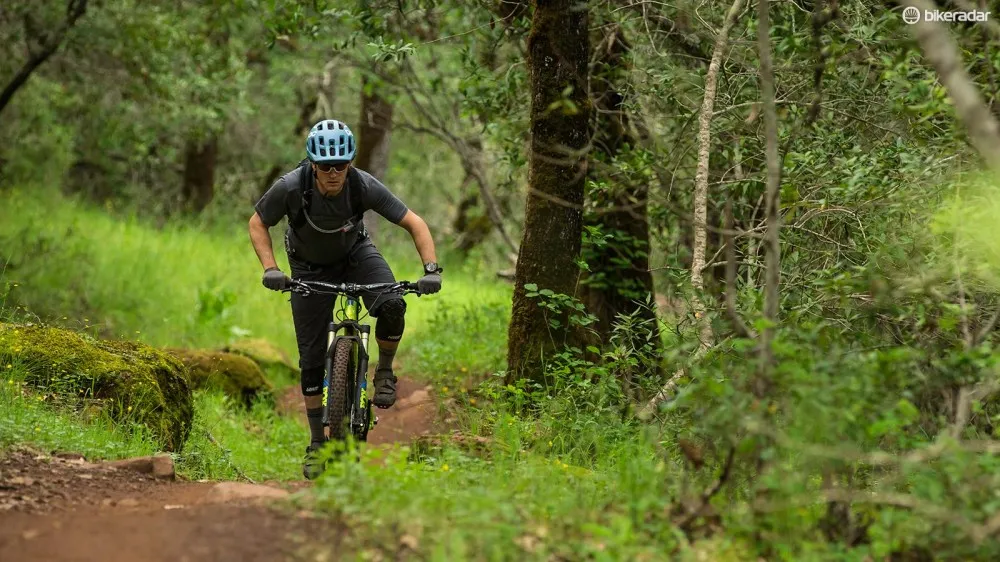
The Optic is an easy-going bike when the trail turns upward
Just as Norco aimed for, the Optic is an active, but not wallowy, climber. The rear suspension serves up traction in spades. Climbs laced with slimy roots, or loose rocks are tackled without much struggle. For smooth stretches of trail, a flip of the Fox shock from open to firm position reduces any unwanted motion.

While less blingy than the Kashima-coated Factory version, the Performance level Float DPS shock is just as effective
While both versions of the Optic pedal well and handle with ease, if we had to choose one, it would be the 29in version. Jon felt that the big wheels provided significantly more grip through the turns. I noted that while the 27.5in version of the Optic was quicker to change direction and more agile in the air, it was also slightly slower (as reflected by back-to-back testing on the same sections of trail), and demanded more steering input and a more attentive pilot when navigating technical trails.

Which wheel size is better? It really doesn't matter, because you're free to choose what works best for you
Now, this isn’t to say that the 29er Optic is the end-all of Norco’s new rides. If your trails tend to be smooth and bermed, or if you have a strong BMX background, maybe you would prefer the sprightly handling of the 27.5in Optic.
Whichever way you roll, though, the Optic is a strong entrant into the short-travel trail bike market.
